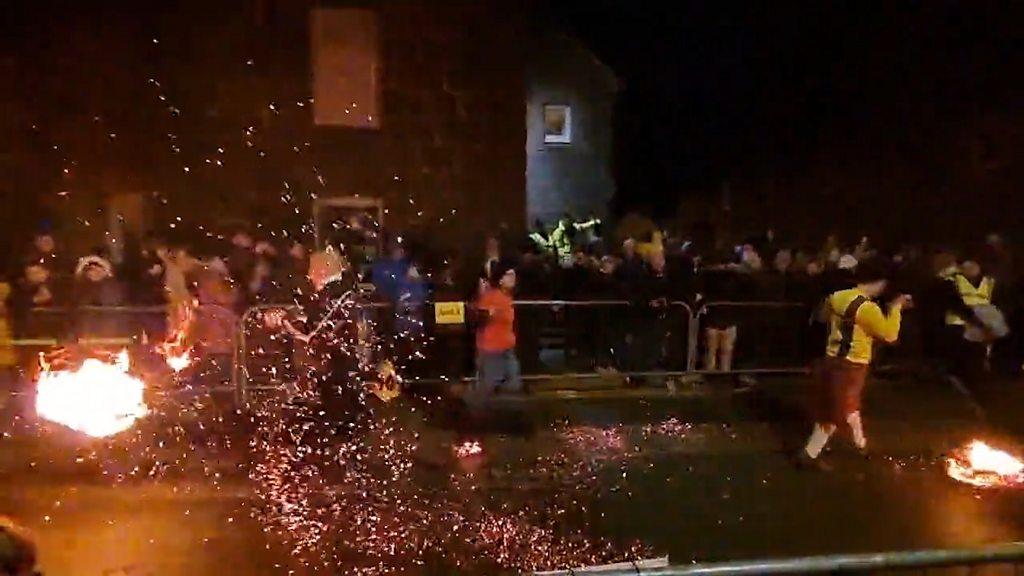New Year's Eve London: Drones not as quick as fireworks
- Published
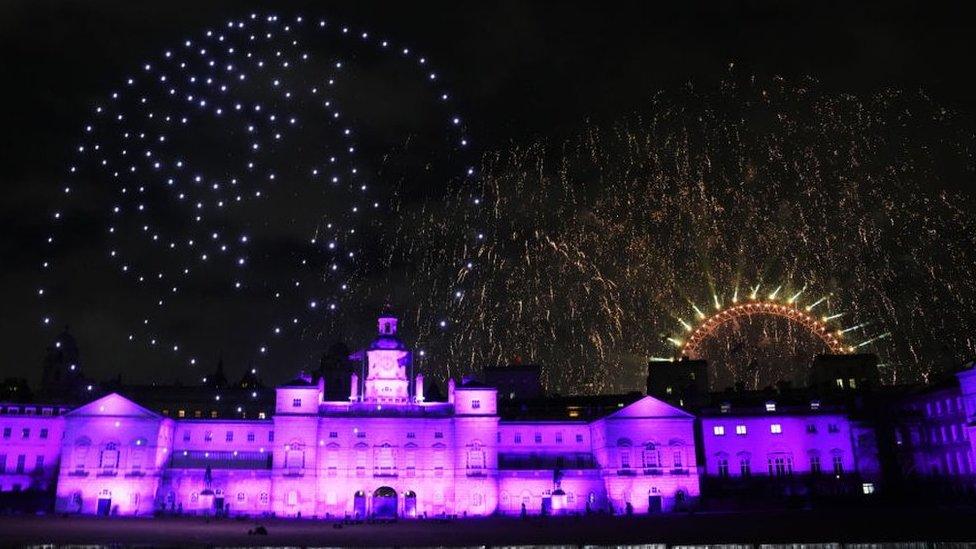
Tributes to the late Queen Elizabeth II were displayed during last year's show
The company that designs the London New Year's Eve midnight display says drones will never replace fireworks because they take too much time to get into position.
Cambridgeshire-based Titanium Fireworks says drones carrying lights need to be complemented with explosives.
If there were no fireworks then there would be gaps in the display while drones were moved around in the sky.
The display in the capital will feature more than 12,000 fireworks.
More than 100,000 people are expected to watch in person next to the River Thames, with millions more tuning in online or on BBC One television.
Titanium say it takes it nearly six months to plan the display, then a further month to design and create it.
It also creates Edinburgh's Hogmanay which requires a similar amount of preparation as well as the Cromer New Year's Day display in Norfolk, which takes place over the sea.
Titanium's co-director, Darryl Fleming, says that before picking any fireworks, he listens to the soundtrack several times.
Last year's montage included tunes by Stormzy, Calvin Harris, Rihanna and Madness.
"You find that the music will sort of dictate a certain colour or a style of firework. It becomes intuitive over time," he said.
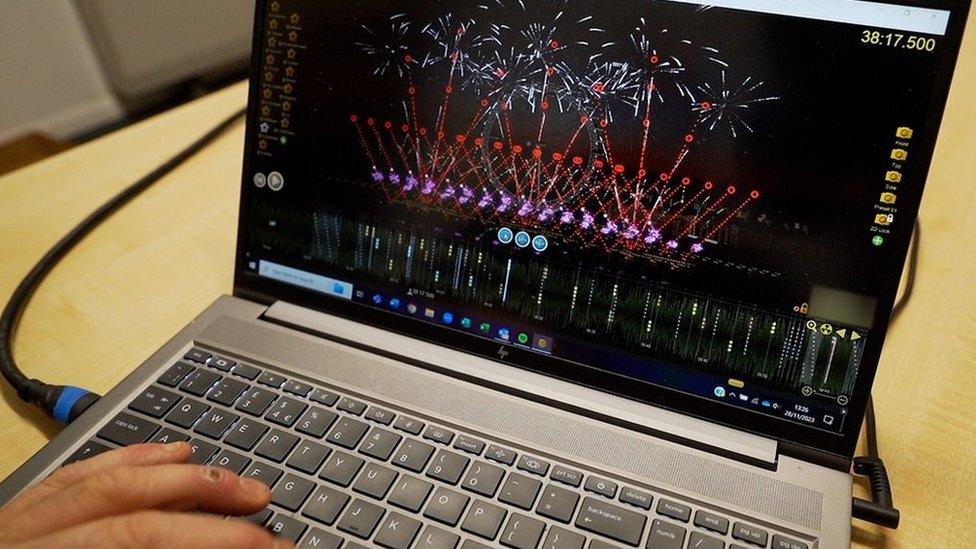
Choreography software is used to add different fireworks and colours to the show
A computer simulation is created using firework choreography software which is much cheaper than practising with the real thing.
The 400 drones used last year were provided by a different company, Celestial.
They created the shape of a crown in the sky in tribute to Queen Elizabeth II, before transforming into the shape of ER II and then the familiar image of the late monarch's face in profile on a huge coin.
This year's display is expected to mark the 75th anniversary of the NHS.
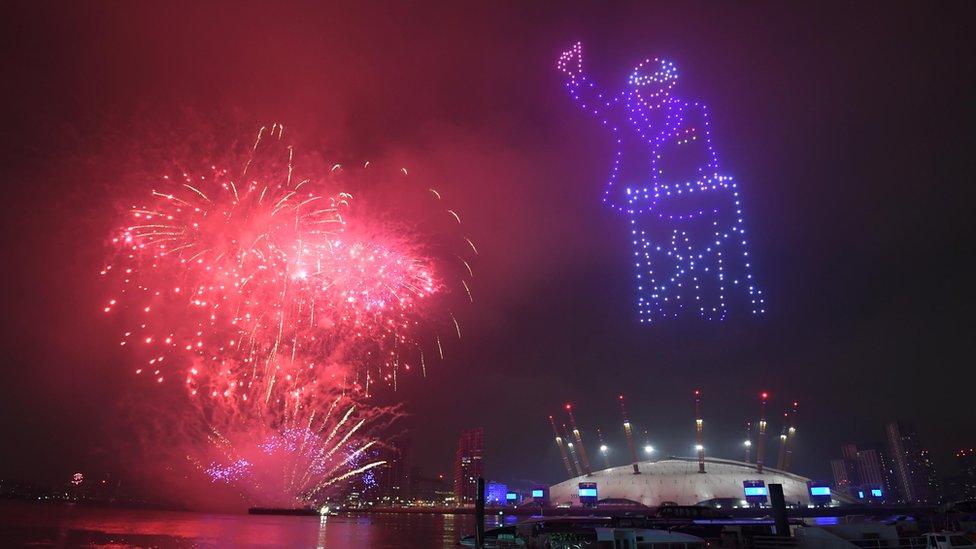
Captain Tom lit up the skies during the Covid-hit 2021 New Year celebrations in London
In recent years, there has been some debate about whether drones should replace fireworks displays for environmental reasons.
Titanium said the carbon emissions from London's New Years Eve display were roughly equivalent to a car driving 600km - emissions the company said it paid to offset.
Mr Fleming said fireworks and drones work well together.
"We can tone down a display to allow drones to do a big reveal, but drones need time to dial down their lighting and move into their next image," he said.
"That's where the fireworks can come in, do a 30-second sequence and then tone the fireworks down for the next drone reveal."
He also said that when it comes to finales, drones cannot compete in terms of size and scale.

Follow East of England news on Facebook, external, Instagram, external and X, external. Got a story? Email eastofenglandnews@bbc.co.uk , externalor WhatsApp 0800 169 1830
- Published1 November 2023
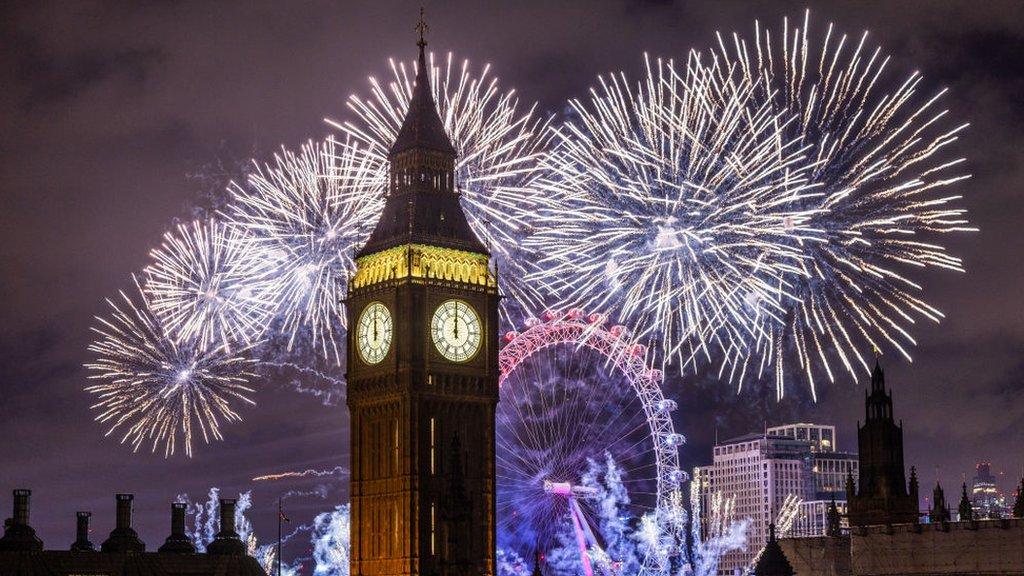
- Published1 January 2023
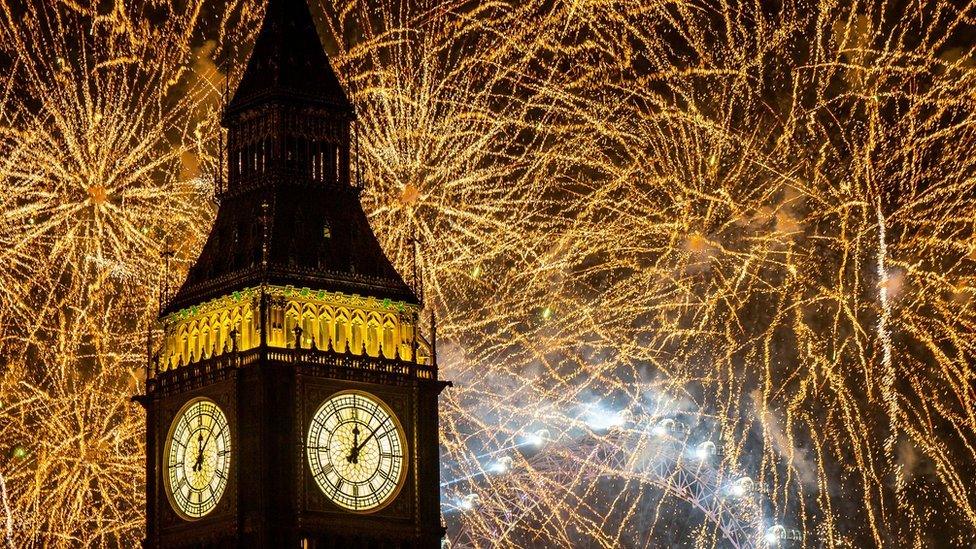
- Published1 January 2023

- Published2 January 2023
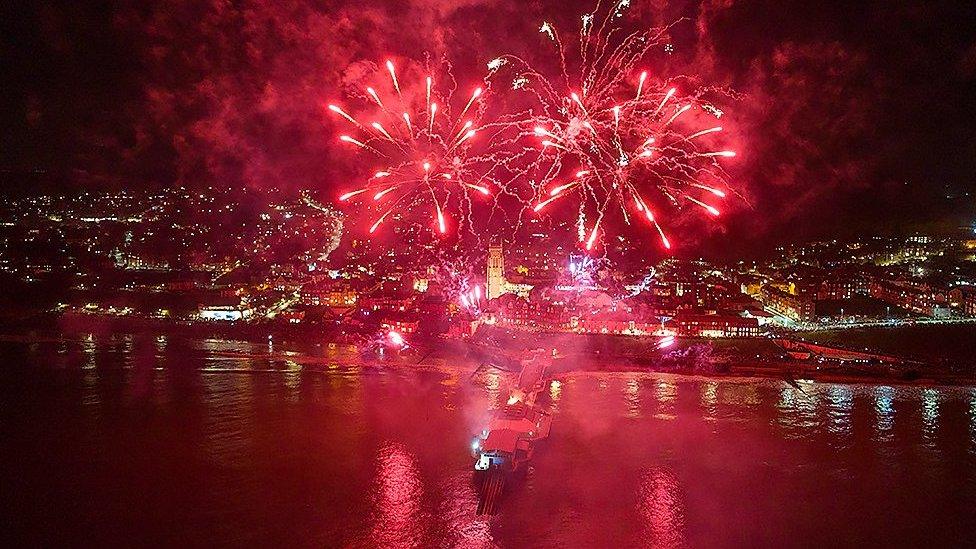
- Published1 January 2023
